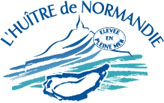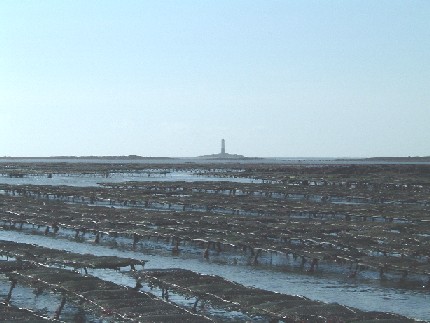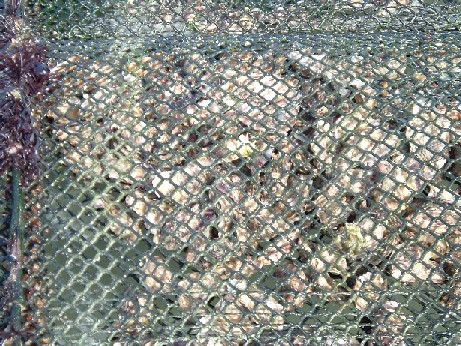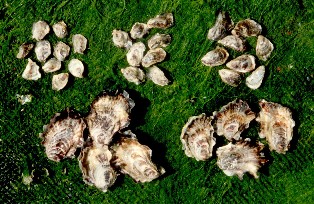

Working on the Oysters |
 |
 |
Our oysters from the West coast of the Cotentin are characterized by an exceptional sea water taste. In order to breed these tasty and fleshy oysters, three steps are necessary. |
 |
1 - "Le Captage" : |
 |
Terracotta tiles are placed on the sea bed to enable the oyster eggs to cling to them when the oysters reproduce. The tiles are covered with chalk to make it easier to remove the oysters from the tiles. |  |
 |
The “captage” takes place on the Southwest coast of France because the strong currents and the water temperature in our area would make it impossible for the oysters to reproduce. |
 |
2 - Breeding : |
 |
 |
Once the oysters have been separated from the tiles they are moved out into the ocean and placed in sacks set on oyster tables. The oyster beds are scattered in different parts of the foreshore where they are uncovered at low tide.The oysters are placed in different beds according to their growth. The sea water is renewed daily by the high tides in the area that in turn provides plankton for the oysters. |
 |
The sacks are turned and shaken regularly thereby preventing the oysters sticking together. This also ensures a nice oval shape. |  |
 |
3 - Maturing : |
 |
Once the oysters have reached a commercial size they are gauged and then stored on the foreshore where they will be covered and uncovered daily by the tides. This process enables the oysters to become accustomed to living in or out of the water and also hardens their shells. Thus the oyster can be kept out of water up to 8 days. This process is called “soaking”. |
 |
It takes between three and four years to complete these different stages before the oyster reaches your plate. |
 |